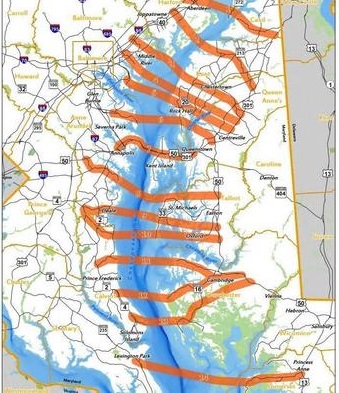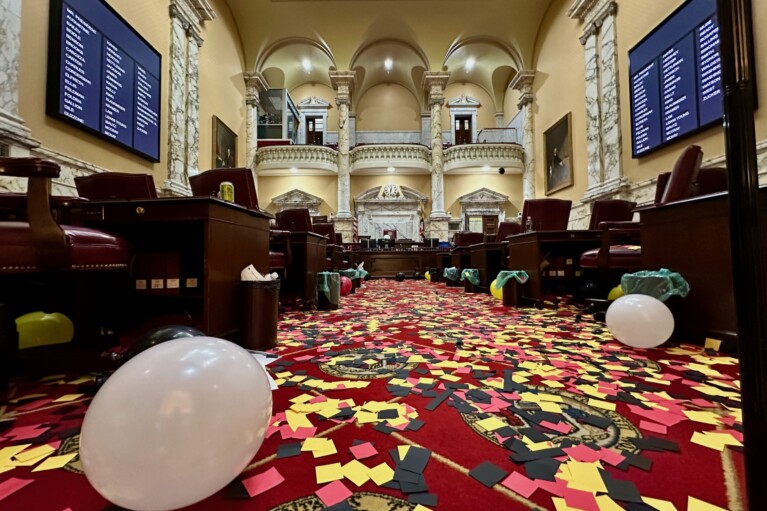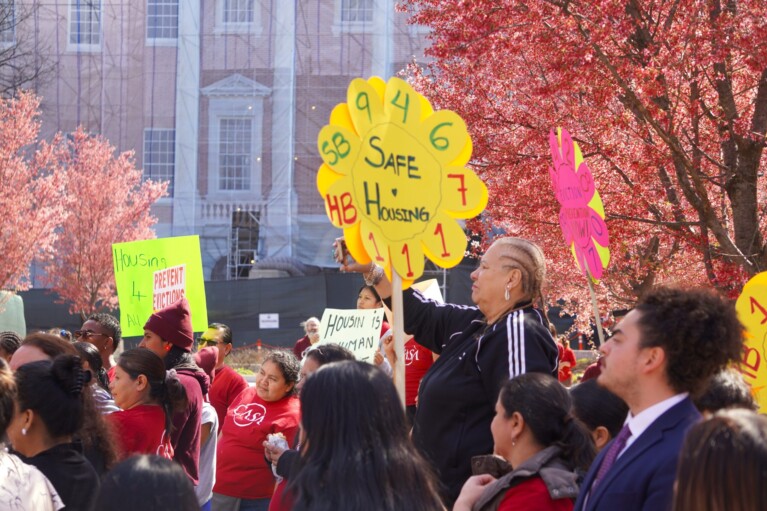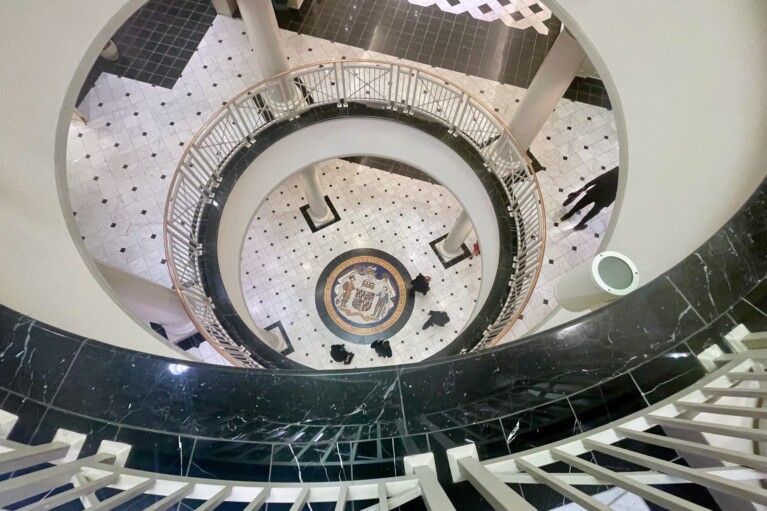As Bay Crossing Options Surface, Anne Arundel Wants Say Over Potential 3rd Span

Lawmakers and residents of Anne Arundel County urged a Senate panel on Wednesday to give them the ability to veto possible construction of a new Chesapeake Bay bridge, arguing the two existing spans have already created significant impacts on local roads.
Sen. Edward R. Reilly (R-Anne Arundel) wants his constituents to have the same rights that nine Eastern Shore counties won from the state in the 1978.
Those nine counties were worried that a super highway carrying thousands of Washington, D.C.-area motorists to the beach would spoil the rural character of their communities.
Reilly’s bill was heard in the Senate Finance Committee on Wednesday, one day after a Maryland Transportation Authority image of more than a dozen potential new bay bridge alignments surfaced online.
The alignments are spread over more than 100 miles of bay shoreline, from Harford County north of Baltimore to St. Mary’s County in Southern Maryland. Five of the Western Shore options are in Anne Arundel County, stirring fears that existing traffic woes will only get worse.
“Over the next ten to fifteen years, this traffic jam will continue to grow, from Saturday and Sunday to Friday to Monday, and even Thursday to Tuesday,” said Reilly, a member of the finance panel. “People are changing their driving habits because of the terrible position that we’re in because of the limited number of roads.”
He told his colleagues that neighborhood roads are frequently overwhelmed with bailout traffic and that public safety response times have been impacted by the chaos.
“We need the [new] crossing,” he acknowledged, “but I don’t think it should be in Anne Arundel County.”
State officials have said that without a new bridge to carry motorists from the I-95 corridor across the bay, the two existing spans will become overwhelmed over the next decade or so.
Anne Arundel is far from alone in wanting the power to veto state transportation projects.
Gov. Lawrence J. Hogan Jr.’s plan to widen Interstate 270, the Capital Beltway and the Baltimore-Washington Parkway has led lawmakers from the capital region to seek the same veto power the Eastern Shore has had for decades.
Such proposals “level the playing field … between the Eastern Shore and the rest of the state, by creating some check on really major transportation projects,” said Ben Ross, head of the Maryland Transit Opportunities Coalition. “The cooperative relationship that we’ve always had between the counties and the state DOT has eroded under the current administration.”
Transportation Secretary Pete K. Rahn has defended the state’s plans, arguing that current highways in the capital region are overwhelmed with traffic and will only get more crowded with time.
He said bills to give counties veto power over toll roads and bridges serve only to delay Maryland’s efforts to expand its transportation network.
Senate Minority Whip Stephen S. Hershey Jr. (R-Upper Shore) called Reilly’s bill “a poorly written piece of legislation,” and he sparred with citizens from Anne Arundel who showed up to testify in favor of it.
“I don’t think that we can start creating legislation and adding to legislation that gives one county the ability to veto a very important state project,” Hershey said. “You’re putting us in a position that every county can have veto authority. They all say ‘no.’ We get no project. And nothing gets completed.”
Anne Arundel civic leader Pat A. Lynch, president of the Broadneck Council of Communities, countered, “As [House Speaker] Mike Busch has said, we’ve given enough.”
The Maryland Chamber of Commerce and the Maryland chapter of the Associated General Contractors of America testified against the proposal.
“Projects with a state interest should not be subject to veto by individual counties,” said AGC’s CEO Champe McCulloch.
“You know politics. Loud voice, small numbers. Bare majority of a county council or a group of commissioners. Is that the environment that we want decisions to be made on important statewide projects?” he said.
This story was updated to correct the year that the Eastern Shore toll bridge veto measure passed. It was passed in 1978.




 Creative Commons Attribution
Creative Commons Attribution